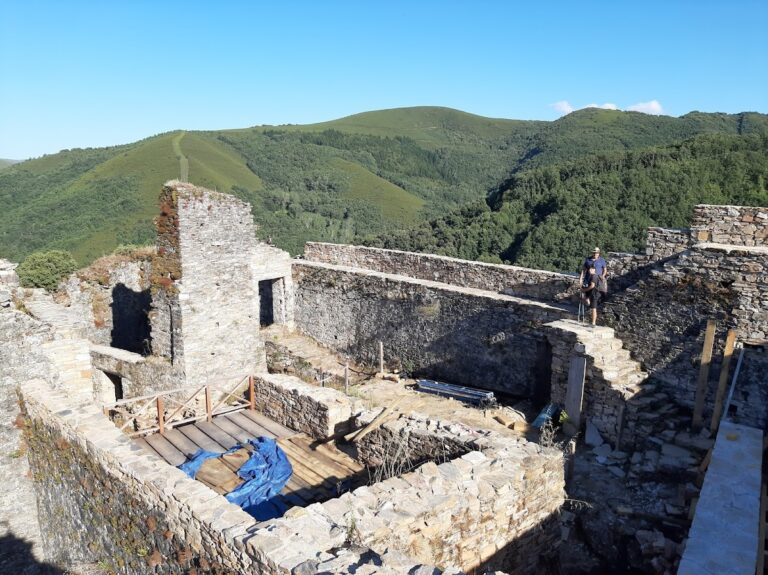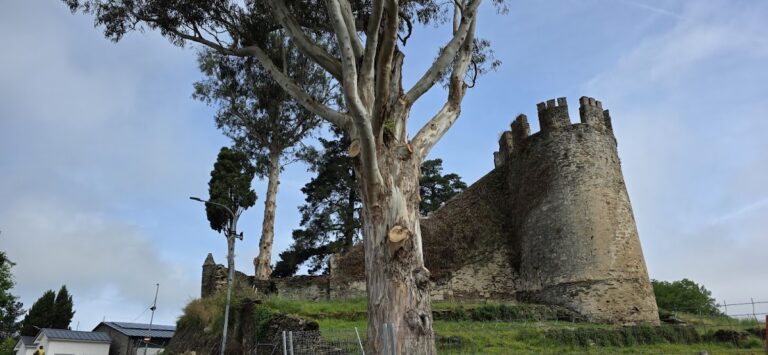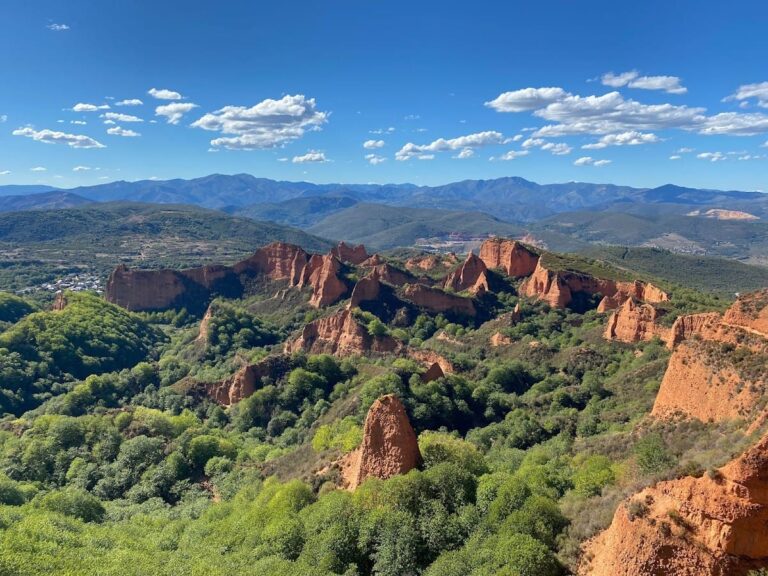Castelo de Doiras: A Medieval Fortress in Cervantes, Spain
Visitor Information
Google Rating: 4.3
Popularity: Very Low
Google Maps: View on Google Maps
Official Website: www.concellocervantes.es
Country: Spain
Civilization: Unclassified
Remains: Military
History
The Castelo de Doiras is a medieval fortress situated in the municipality of Cervantes, Spain. It was constructed in the later part of the 15th century by the noble Osorio family, who originated from the Kingdom of León. The castle’s establishment is attributed to Diego Pérez Osorio y Guzmán, the first lord of Cervantes and Villacid, and it played a key role in regional defense.
During its early history, the fortress was strategically placed to guard one of the principal approaches into Galicia along the Camino de Santiago pilgrimage route. This path followed an ancient Roman road known as XIX, which connected the cities of Astorga and Lugo. The castle’s position on a high promontory allowed control over this vital passage and the surrounding area.
Ownership of the castle passed from the Osorio family to the Grajal de Campos family in the 17th century. This lineage later attained noble titles including Marquises of Alcañices in the 18th century and Dukes of Sesto in the 19th century, reflecting their rising status. The last known lord was José Osorio Silva, who died in 1909. By the early decades of the 20th century, the castle had fallen into ruin.
In the 1940s, Emilio Martínez Baladrón acquired the crumbling structure and undertook restoration efforts that shaped its current appearance. Recognition of the castle’s cultural value grew over time, culminating in its designation as a Bien de Interés Cultural, a protected heritage site, in 1994. Ownership passed to the Fundación Xosé Soto de Fión in 2000, and later, in 2024, the Cervantes town council assumed stewardship with support from the provincial government of Lugo.
Interest in the site was renewed in 2016 following the discovery of a nearby archaeological feature at O Teso do Castelo. The uncovering of a 17th-century coin there suggested that Castelo de Doiras was part of a broader network of defensive or administrative control covering the area during that period.
Remains
The remains of Castelo de Doiras reveal a fortress constructed mainly of slate masonry adapted to its uneven terrain and organized around a roughly rectangular courtyard measuring about 25 by 21 meters. The castle’s sturdy walls, averaging between one and one-and-a-half meters thick, rise approximately eight meters tall, though their height varies following the slope of the ground beneath them.
At the heart of the fortress stands the keep, or tower of homage, a rectangular building measuring roughly 10 by 8 meters with walls two meters in thickness. Rising to some 14 meters, this tower includes interior rooms once adorned with frescoes that have since deteriorated significantly. Access to the keep is distinctive, reached by a walkway leading to an entrance located about four meters above the ground level, a common defensive design to hinder attackers.
The main entrance to the castle features a wooden gate about four meters high, set beneath a semicircular arch that opens into the central courtyard. The castle overlooks the joining of the Doiras and Cervantes rivers near the Ferrería de Fonquente, a traditional ironwork site, and forms a complex together with a nearby church, once serving as a private chapel for the castle’s owners, plus adjacent residential buildings that supported the fortress community.
Despite the impressive external fortifications, the interior has suffered from neglect, accumulating debris and showing signs of damage, including cracks in the walls caused by insufficient maintenance. Restoration work in the 20th century helped preserve much of its structural form, yet many original interior features, including decorative elements, are heavily degraded.
The archaeological interest in the nearby site of O Teso do Castelo, marked by the finding of a 17th-century coin, hints at the castle’s integration within a larger system of surveillance or defense, reflecting its ongoing strategic importance beyond its medieval origins. This discovery expands understanding of the castle’s role in the historical landscape of the region.










